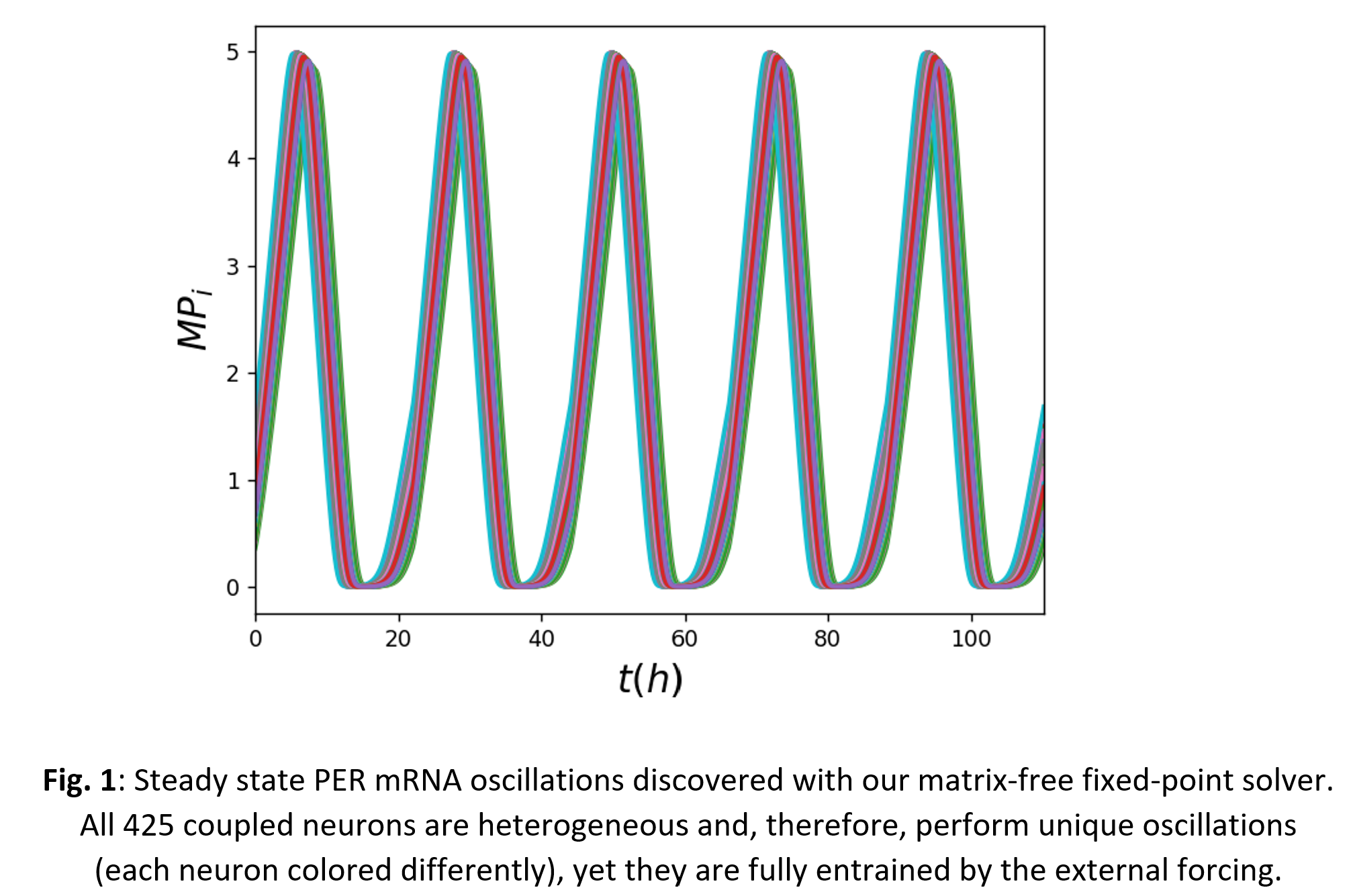Breadcrumb
- Home
- Publications
- Proceedings
- 2022 Annual Meeting
- Computing and Systems Technology Division
- Interactive Session: Applied Mathematics and Numerical Analysis
- (361n) Limits of Entrainment of Circadian Neuronal Networks

In this work, we study a state-of-the-art computational neuroscience model [2] to determine, using modern scientific computing algorithms, the limits of circadian synchronization to the external light signal. We employ a matrix-free approach [3] to locate high-dimensional periodic steady states for various forcing frequencies and duty cycles. Our algorithmic pipeline enables numerical continuation and the construction of bifurcation diagrams w.r.t. forcing parameters. We also computationally explore the effect of heterogeneity in the circadian neuronal network as well as the effect of corrective therapeutic interventions, such as that of the drug molecule Longdaysin.
[1] M. H. Hastings, E. S. Maywood, M. Brancaccio, Generation of circadian rhythms in the suprachiasmatic nucleus, Nature Reviews Neuroscience 19 (8) (2018) 453â469.
[2] C. Vasalou, E. Herzog, M. Henson, Multicellular model for intercellular synchronization in circadian neural networks, Biophysical Journal 101 (1) (2011) 12â20.
[3] Kelley, C. T., Kevrekidis, I. G., & Qiao, L. (2004). Newton-Krylov solvers for time-steppers. arXiv preprint math/0404374.